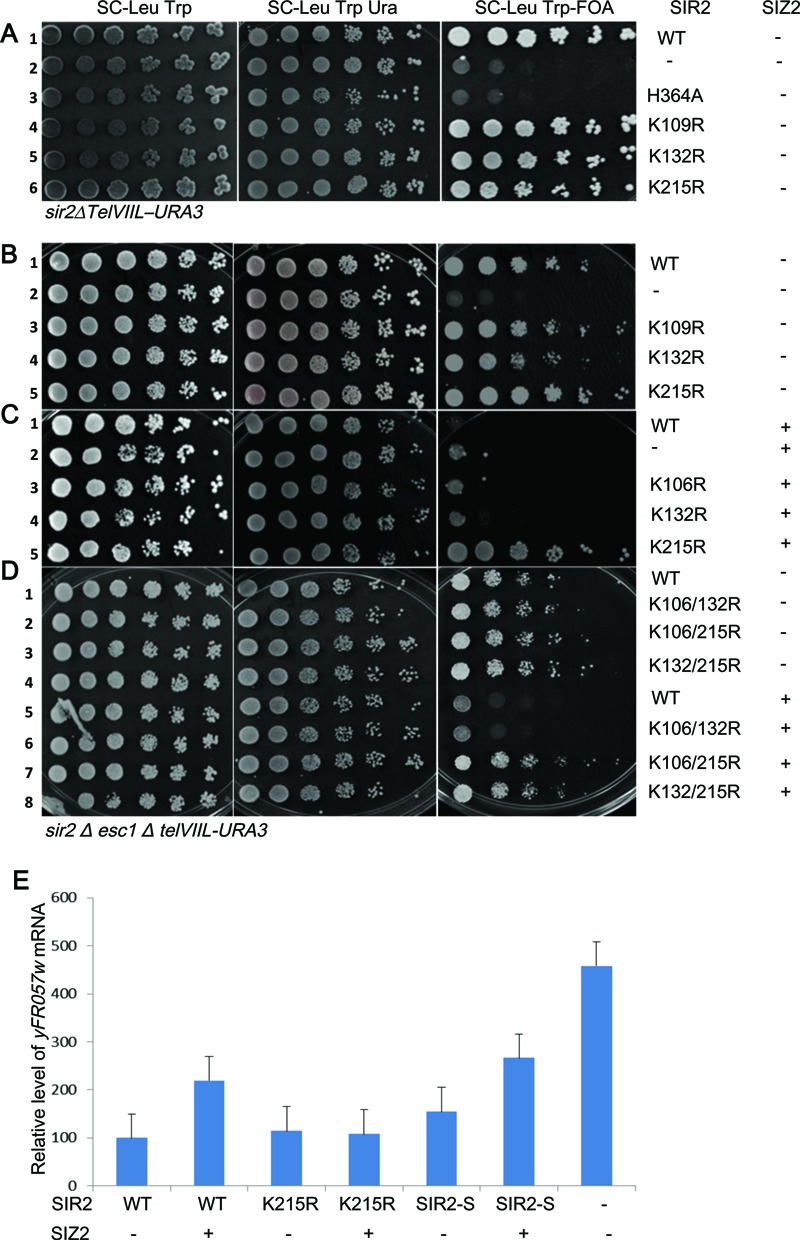Figure 2.

Sir2 K215R is refractory to exacerbation of silencing defect caused by elevated Siz2 dosage in esc1Δ. (A) KRY793 with either wild type or indicated mutants of Sir2 spotted on selective plates. Wild type Sir2 establishes silencing (row 1), empty vector and Sir2 catalytic mutant cannot establish silencing (rows 2 and 3). The point mutants (rows 4–6) are indistinguishable from wild type. (B) KRY 788 with either wild type or indicated plasmids along with either empty vector (B) or SIZ2 (C). Wild type and point mutants grow on 5-FOA plate in the absence of SIZ2 (rows 1, 3, 4 and 5). In (C), only K215R grows on FOA. (D) KRY788 with either wild type or indicated double mutant plasmids along with either empty vector or SIZ2. Wild type and point mutants grow on 5-FOA plate in the absence of SIZ2 (rows 1–4). Upon elevating SIZ2 dosage, WT and K106/132R are unable to establish TPE but K106/215R and K132/215R are able to. (E) Transcription of native silent loci. Transcription of yFR057w was quantified by reverse transcription and real-time PCR analysis for same strains as above. sir2Δesc1Δ with indicated 2micron plasmids are shown on X axis (1-SIR2+vector; 2-SIR2+SIZ2; 3-K215R+vector; 4-K215R+SIZ2; 5-SIR2-SMT3+vector; 6-SIR2-SMT3+SIZ2; 7-sir2Δ). Signals were normalized against actin as control. Results represent an average of at least three experiments, and error bars denote standard deviations. Expression increased both in WT and Sir2–SUMO but not in Sir2–K215R when SIZ2 dosage was elevated.
